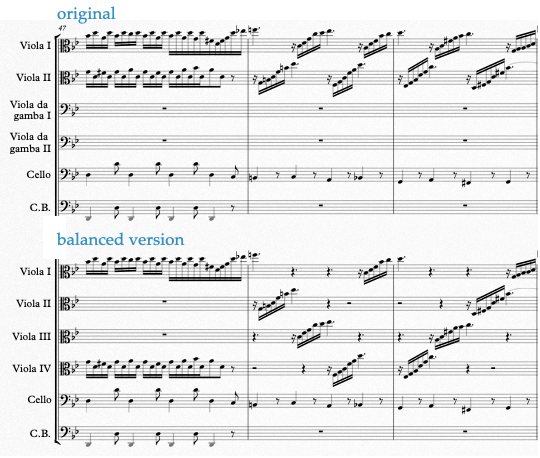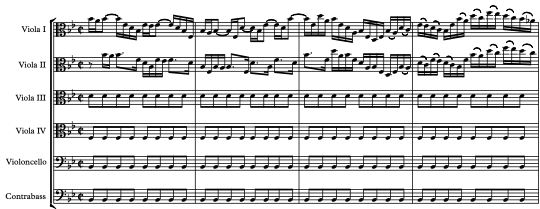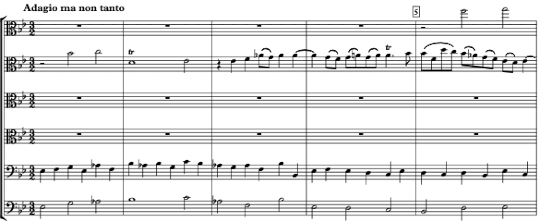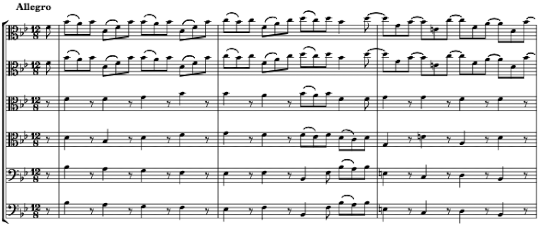composed by Bach, J. S.
Brandenburg Concerto No.6, BWV 1051 by Johann Sebastian Bach has a unique instrumentation that includes only mid-to-low-range instruments: 2 violas, 1 cello, 2 viola da gambas, and 1 contrabass. Bach skillfully uses the mellow tones of these instruments to create an elegant and magnificent piece.
Since the viola da gamba is not a common instrument today, its parts are often played on the cello. Interestingly, most notes in these parts can also be played on the viola, making it possible to perform the piece with 4 violas, 1 cello, and 1 contrabass instead. For the few notes that go lower than the viola’s range, minor adjustments to the cello part allow for an almost complete recreation of the original sound.
At first, we planned to publish a version replacing the viola da gamba with the viola. However, we encountered a major issue: the original viola and viola da gamba parts serve very different roles. The viola parts, like the cello, are highly active, while the viola da gamba parts are more subdued and supportive.
Our goal is for all players to enjoy performing in an ensemble. To achieve this, we made adjustments so that all four viola parts have more balanced roles. We did this by carefully switching parts at specific points in the music. For example, Viola IV may start by playing the original viola da gamba II part, then switch to Viola I, and later play the viola da gamba I part. These transitions must sound natural within the music, so we carefully selected the points where changes could happen. By doing this, we distributed the musical roles as evenly as possible.
We call this arrangement approach the “Balanced Version.” We first used this method in 2008 when arranging Pachelbel’s Canon in D Major for string quartet. The original piece is scored for 3 violins and 1 cello. However, in the cello part, after playing eight quarter notes in the first two measures, the cellist repeats the same pattern 28 times, which can be monotonous. By swapping some passages with the viola, the cello part becomes more engaging to play. This arrangement has been well received.
For comparison, a section (measures 47 to 49 of the third movement) is shown. The top part is the original, and the bottom part is the balance version. In the original, Viola I and Viola II take turns playing the fast passage. In the balance version, Viola I, II, III, and IV work together to play the passage. I think this is much better than having two players resting. Since the passage is divided into four parts, the ensemble becomes more challenging. However, people who enjoy playing in an ensemble find it fun to make a passage like this sound as if a single player is performing it.
We hope more ensemble sheet music will be revised with this idea in mind so that more musicians can fully enjoy their performances through Balanced Versions.

I.
- =32

II. Adagio ma non tanto
- =32

III. Allegro
- =82



